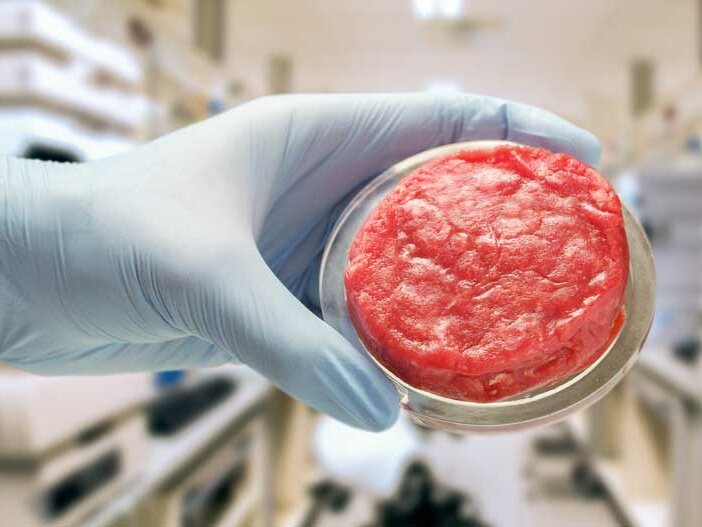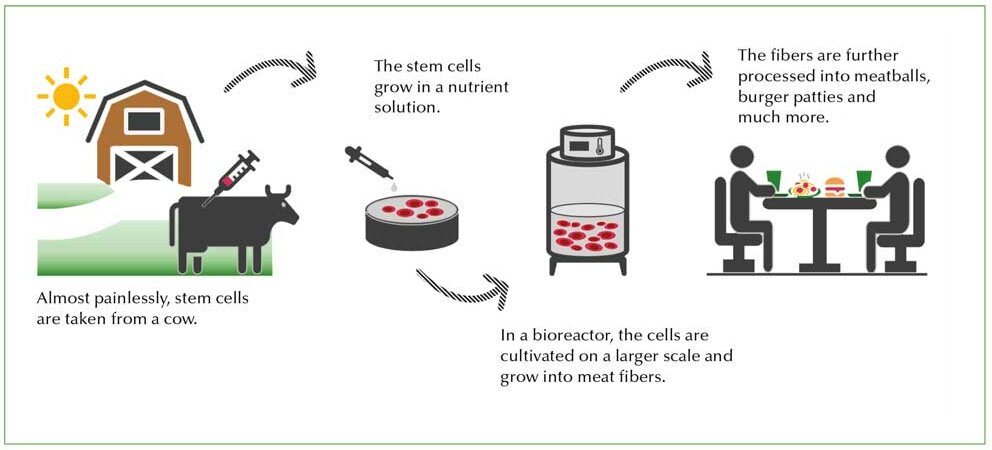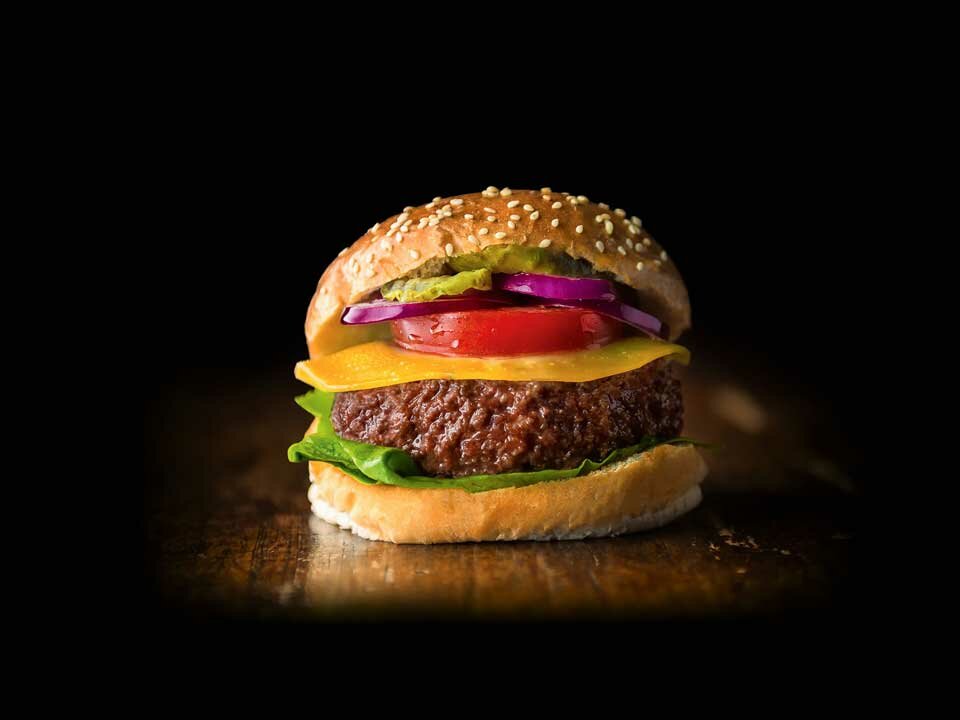Lab-grown meat - a revolution
By Professor Dr Nick Lin-Hi, Department of Economics and Ethics, University of Vechta, Germany
Both the economic environment and new political and societal demands are making demands on farmers. On the one hand, low-cost and high-quality food is expected, but on the other hand, so is more sustainability and animal welfare. However, it is also difficult in agriculture to produce products more sustainably and more cheaply at the same time. The question arises as to who bears the costs incurred.
Consumers are constantly calling for more sustainable products and improved husbandry conditions, but contrary to all protestations, they usually look at the price in the supermarket. Yesterday, as today, the majority of consumers are not prepared to pay for sustainability.
For some time now, the relationship between agriculture and society has been in a state of conflict.
It is becoming increasingly clear that modern, size-oriented agriculture is reaching its limits. One reason for this is the associated ecological burdens, such as the loss of biodiversity, groundwater pollution and emissions.
From a global perspective, livestock farming alone is responsible for almost one-sixth of man-made greenhouse gas emissions. In addition, modern livestock farming raises various ethical questions. However, all this is not to be understood as an accusation against farmers, but as a description of the situation. Both the positive and negative sides of modern agriculture are a social phenomenon, reflecting both consumer price focus and political frameworks.
By now it should be clear to most people that there will be no "business as usual".
There is no alternative to change. The transformation path that has now been taken (politically) is linked to the narrative of sustainable and future-proof agriculture. At its core, a program is being pursued that focuses on resource efficiency, plays on the nice-sounding "farm-to-table" idea, and is geared toward reducing animal suffering.
The basic logic of the agricultural system remains intact. The focus is still on the domestication of animals and plants. This is precisely where a fundamental weakness of current transformation efforts lies: It is a transformation in the rearview mirror, holding on to what already exists. It does not take into account that a revolution is just starting: Away from the barn and into the lab. This is the program of cellular agriculture.
Cellular agriculture is heralding a paradigm shift in the production of animal products, which is largely ignored in this country by both politicians and the agricultural and food industry. This is fatal, because in the future, products such as meat, fish and milk can be produced (almost) without animals.
Cultivated meat is the first step in this direction. It no longer grows on animals, but in bioreactors. What sounds like science fiction at first glance is already reality today. Since December of last year, chicken nuggets made from lab-grown meat have been served in Singapore. It is safe to assume that cultured meat will be on the plate in other countries in the foreseeable future.
Cultured meat is not a substitute product.
It is "real" meat. Unlike plant-based meat substitutes, it is therefore not an imitation in which a meat-like product is made from peas and other plant protein sources with the addition of flavorings, stabilizers and the like. Conventionally produced meat and cultured meat are the same product - the difference is only in the way they are produced.
The starting point of cultured meat is an animal cell (see diagram). This is fed with growth factors, energy and nutrients in a nutrient medium. Meat fibers then grow in a bioreactor and are processed into meat products. The meat of tomorrow looks, smells and tastes just like meat produced by raising, fattening and slaughtering animals.
Lab-grown meat is a key to sustainable meat consumption.
Laboratory meat makes the discussion about animal welfare superfluous. And if the energy required also comes from renewable sources, it is likely to be the most environmentally friendly meat product on the market. Optimistic estimates suggest that climate emissions from meat production can be reduced by up to 90%. Reductions of similar magnitudes are also possible in water and land consumption. In addition, production is independent of climatic conditions, so that cultured meat can make an important contribution to global food security in times of global warming. The above factors alone mean that the new method of producing meat represents nothing less than a social milestone.
A look into the future suggests that cultivated meat will sooner or later be an important element of global sustainability strategies. As things stand today, global demand for meat is expected to increase by at least 60% by 2050. The main reasons for this are well known: growing world population and rising prosperity levels. Meeting the growing demand for meat by expanding livestock farming would mean that socially formulated sustainability goals such as climate neutrality would be virtually impossible to achieve. It should be recalled here that livestock farming is already responsible for just under one sixth of man-made greenhouse gas emissions. Efficiency gains in conventional meat production will not be sufficient to compensate for the additional environmental impact of rising production volumes.
Acceptance and willingness to buy - how does the consumer react?
In the first step, cultured meat will be of interest to specific target groups, including sustainable consumers. They buy cultured meat because of the contribution it makes to sustainable development. Also included in the target group are consumers who enjoy eating meat but have voluntarily limited their consumption for animal welfare reasons. Cultured meat allows this group to enjoy meat without ethical concerns, as it does not require intensive animal husbandry or slaughter. Finally, cultured meat is of interest to those who have a high affinity for innovation and new technologies. Here, it is curiosity and the desire for new things that drive the demand for cultured meat. What these groups have in common is that they are also willing to pay a price premium.
For the majority of consumers, price is and remains the decisive purchasing criterion. They have no or only an extremely limited willingness to pay for sustainability. This explains why sustainable products regularly remain in niche segments.
The special feature of cultured meat is that as production volume increases, it can reach the price level of conventionally produced meat. Such price parity makes it a direct competitor product. Access to the mass market is then opened up. In the long term, it can be expected that cultured meat can even be produced and offered at lower prices than conventional meat products due to a significantly shorter value chain. Due to the high price focus of consumers, the point will be reached at the latest here at which cultured meat will push conventional meat into the niche.
When will lab-grown meat make its way into the market?
The production of cultured meat is already possible today. The question is no longer whether it will find its way into the market, but only when. However, there are still some challenges to be solved for marketability. In addition to ensuring consistent quality, there is also a need to further reduce production costs.
A major cost factor at present is the fetal calf serum for the culture medium, which is also not compatible with the idea of animal welfare. However, current progress in research and development suggests solutions to this in the near future. Currently, a burger patty made from lab-grown meat can be produced for well under ten euros. On the one hand, this is still a proud price. On the other hand, the price ticket of the first cultured burger in 2013 was €250,000.
The new way of meat production is in the final phase before entering the market. A clear indication of this is also provided by the company valuations in this segment, which have now clearly exceeded the billion euro mark. Another indication is that the world's largest food company, Nestlé, has just entered into a partnership with the Israeli start-up Future Meat Technologies, which is one of the leading developers of cultured meat. The high valuations not only reflect the expectation that cultured meat will gain a substantial market share. Also, the IPOs that are already emerging not only provide companies with further access to capital, but will also draw public attention to the new form of meat production.
The massive influx of financial resources will lead to an acceleration of developments and an expansion of what is technically feasible. While lab meat today enables unstructured products such as bratwurst, chicken nuggets or hamburger patties, work is already underway on the steak of the future. Perhaps it will come from the 3D printer at some point?
Conclusion
Technology is also opening up possibilities for healthier meat products and personalized nutrition. While we all eat the same steak today, in the future the same could be tailored to the (daily) individual nutrient requirements. Or to put it more generally: The nutrition and health sectors are about to merge. This suggests that cultured meat not only represents a different way of producing meat, but also makes entirely new business models conceivable.
Regardless of the exact direction in which cultured meat will develop, it will lead to an upheaval in the industry. Lab-grown meat is poised to become the biggest and most disruptive innovation in the recent history of agriculture. The timing of its launch is nearly perfect due to the ubiquity of societal sustainability challenges. Cultured meat has all the ingredients to kick off what Schumpeter once called "creative destruction." On the one hand, it devalues established value creation processes, business models, and competitive advantages. On the other hand, cultured meat also offers new opportunities for action and investment. For farmers, this offers a serious option to escape the current sandwich position.






